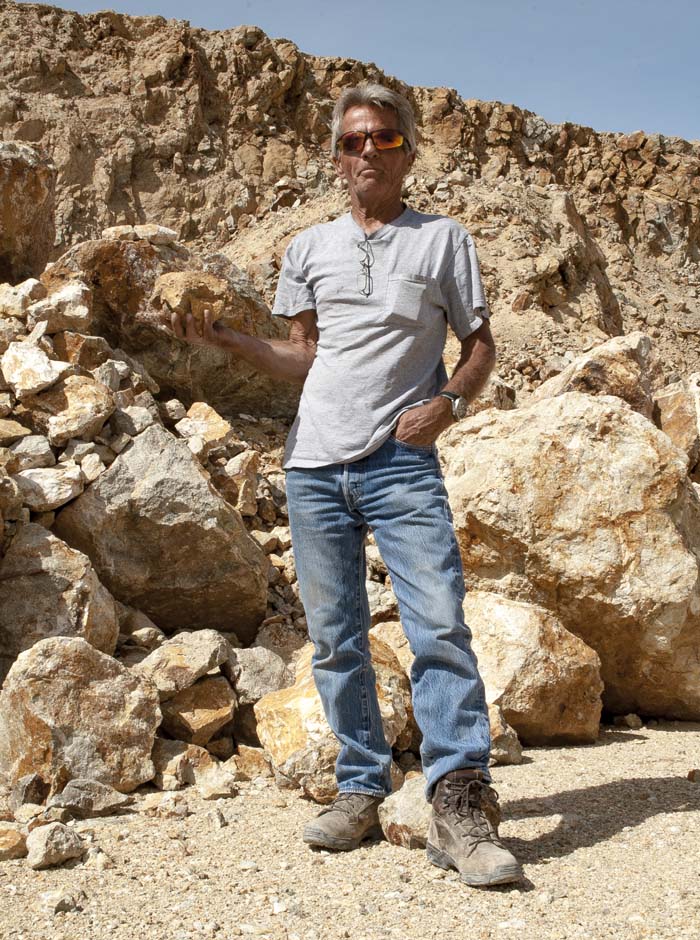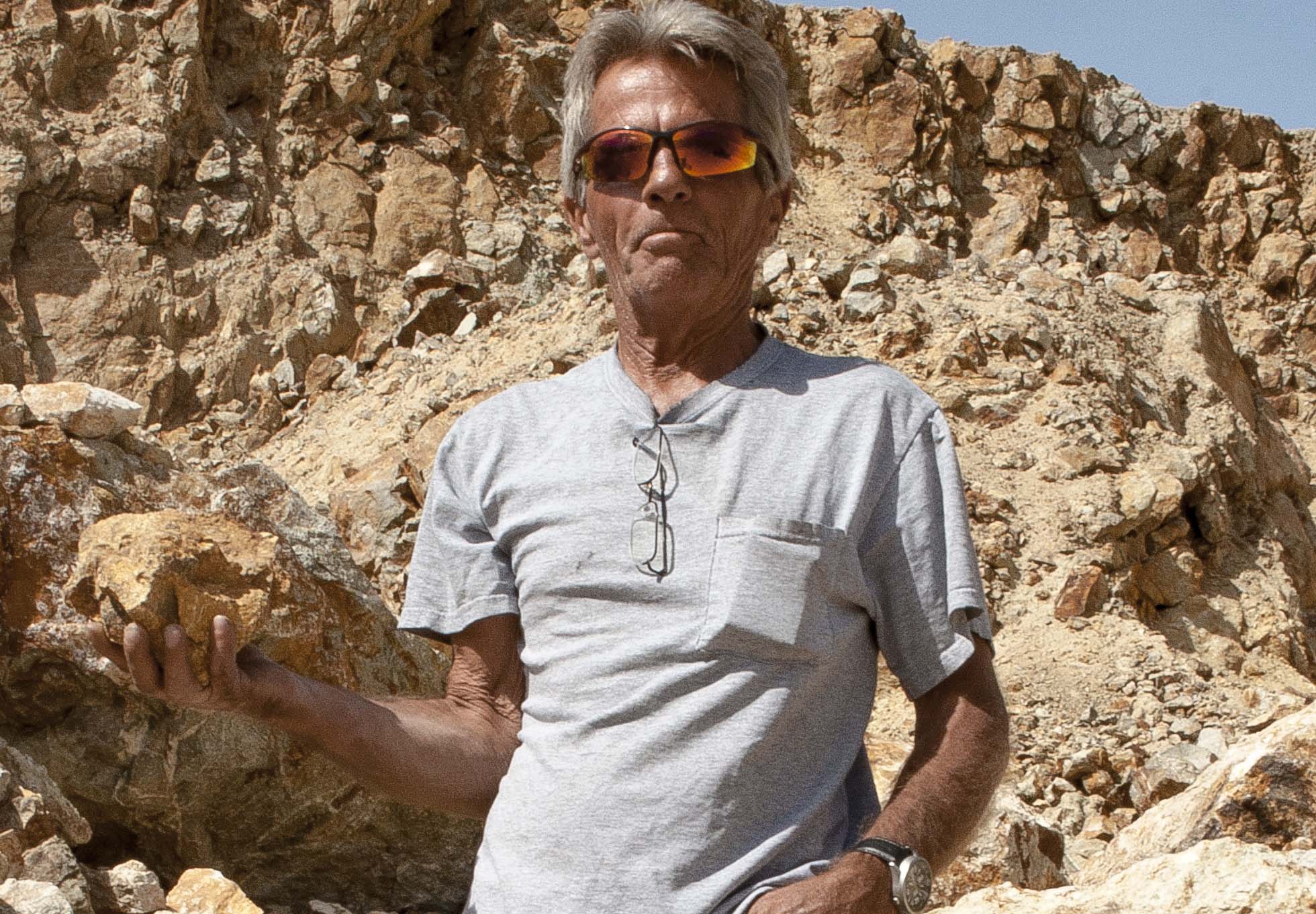
The Tooele County recorder said yes, indeed there are permanent residents in Gold Hill, Utah, but “they’re the kind of people that might greet you on the porch with a shotgun and ask you what you’re doing there.”
Gold Hill, Utah, is tucked up against the West Desert hills near the Beehive State and the Silver State border. The unincorporated town shares the common history of any dusty mining boom-bust burg: precious or economically viable metals and minerals were discovered, people flocked to make their fortune, services followed, and when the ore ran out, so did the town’s inhabitants. What’s left of Gold Hill’s boom days are stories, building foundations, ghost town structures, original-family seasonal cabins, and one still-operating mining outfit.

Tom Moffitt, Desert Hawk Mining Company’s general manager, rolls up in the company’s gritty pick-up truck. Tom is one of Gold Hill’s three permanent residents, and they aren’t used to visitors, but Tom’s immediate, easy demeanor contradicts the county recorder’s warning.
Curious to know what people living in Gold Hill do, Tom replies, “I’m about the last man standing.” Tom is a lean, smaller Clint Eastwood lookalike whose skin is a deep sun-infused ochre. He’s been living in Gold Hill since 2010 and working the mining operation that Desert Hawk leases from Clifton Mining. Claudia and George are Gold Hill’s other permanent residents, descendants of original mining boom families, but their age and health have redirected their interest from Gold Hill to retirement communities for their golden years.
“Now, the stories I’ve heard,” Tom begins, “I don’t know how truthful they are.” Clearly the yellow brick building shell was Gold Hill’s mercantile. “And that log structure over there,” Tom continues, “was the beauty parlor for the wives of the mining bosses. I was told it also was a birthing center,” he adds.
An off-balance, rectangular corrugated tin building supposedly was Utah’s first bowling alley. At one time, Gold Hill had as many as 3,000 residents, but now, as Tom notes, “This is not a vacation destination for anybody.” Conditions are harsh. “Snakey-country,” as Tom describes it, and the town’s only water comes gravity-fed from a natural spring. “But don’t drink the water,” Tom advises. “It’s got arsenic in it.”
Arsenic was mined in Gold Hill during both world wars, and the area’s hills are famous for having a clustered scope of minerals that offer opportunities for higher learning. Universities, Tom says, teach geology students at the nearby Yellow Hammer Mine.
Desert Hawk, a mid scale mining company, is still working their lease for microscopic gold. Current market values make the industrial-scale process profitable, and the work, Tom confirms, “is as real as it gets.”
Tom outlines the process. “Drill, blast, haul, stack, leach.” It’s what keeps him living in Gold Hill, supported by a small crew who weekend outside of town. Tom’s politics lean toward development ethics, which makes sense given that he entered mining processing at the age of 22. “The only people who care about here are the people who don’t live here,” he comments.
The old-timers will leave, and if the Gold Hill district mining operations wane and perish, then surely Gold Hill will truly become a mining ghost town—a mere memory of its former self.






